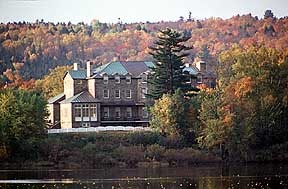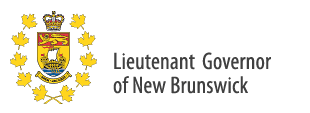
The Government House site was once the location of the 17th century Acadian settlement known as Sainte-Anne. Located nearby is an earlyburial ground where both Wolastoquewiyik (Maliseet) and Acadian peoples are buried. Government House has had a varied and colourful history since the first cornerstone was laid in 1826 and the official re-opening in 1999.
- Designed by English-born New Brunswick architect J.W. Woolford, who designed several other buildings in Fredericton, including Fredericton Barracks, the Old Arts Building at the University of New Brunswick and the York County Jail.
- Served as the official vice-regal residence until 1892 - many important decisions affecting the Province were made in the building.
- It was abandoned as the official vice-regal residence in 1894 for financial reasons, following the tenure of Lieutenant Governor Sir Samuel Leonard Tilley.
- Government House became the Fredericton Institute for the Deaf and Dumb from 1896 to 1900.
- Units of the Canadian Expeditionary Force occupied the building from 1914 to 1921.
- It became a military barracks during World War 1 and later a hospital for returning soldiers until 1924.
- Government House remained vacant until 1934 when it became RCMP J Division headquarters until 1988.
- Recognizing the historical and architectural importance of Government House, the Historic Sites and Monuments Board of Canada declared the building a National Historic Site in 1958, and erected a plaque on location in 1962.
- In 1996 the Province of New Brunswick designated the building and property a historic site under the Historic Sites Protection Act , paving the way for the recent renovations to its original state.
- After renovations began in May 1997, Government House became the home of the current Lieutenant Governor and was opened to the public July 1, 1999.
